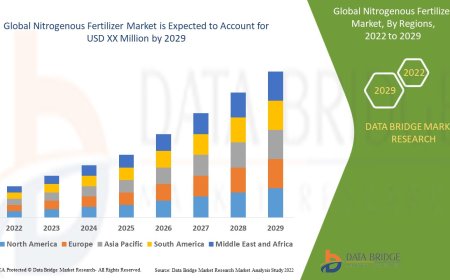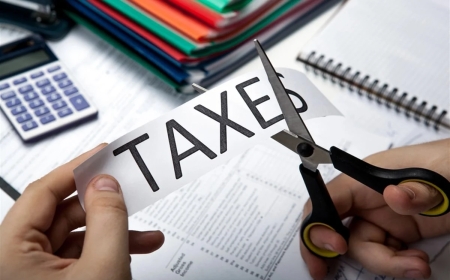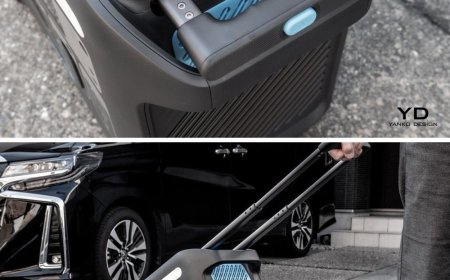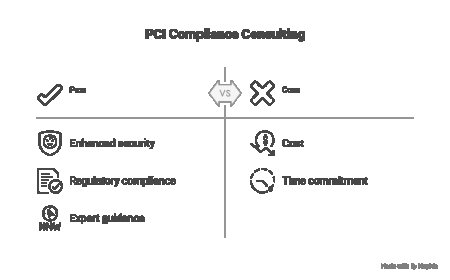Can NFC Cards Be Used to Manage Digital Waitlists or Appointments?
Near Field Communication technology has revolutionized how we interact with digital systems, creating seamless connections between physical objects

Introduction to NFC Technology and Digital Queue Management
Near Field Communication technology has revolutionized how we interact with digital systems, creating seamless connections between physical objects and digital platforms. The question of whether NFC cards can effectively manage digital waitlists and appointments opens up a fascinating discussion about the intersection of convenience, efficiency, and technological innovation in service delivery.
The modern consumer expects instant gratification and streamlined experiences. Traditional paper-based appointment systems and manual waitlist management have become increasingly inadequate in meeting these expectations. NFC business card present a compelling solution that bridges the gap between physical presence and digital efficiency, offering a tangible yet technologically advanced approach to queue management.
Digital waitlist systems have emerged as a necessity rather than a luxury in today's fast-paced world. From restaurants struggling with crowd management to healthcare facilities optimizing patient flow, the need for intelligent queue management solutions has never been more pressing. NFC cards provide a unique opportunity to enhance these systems by offering a physical interface that customers can easily understand and interact with.
Understanding NFC Cards and Their Capabilities
NFC cards operate on the principle of electromagnetic induction between two loop antennas when they are brought close together, typically within a range of four centimeters. This proximity-based communication creates a secure and intentional interaction, making NFC cards ideal for applications requiring deliberate user engagement rather than passive scanning.
The technology embedded within NFC cards allows for bidirectional data exchange, meaning information can flow both ways between the card and the reading device. This capability is crucial for waitlist management systems where real-time updates about queue positions, estimated wait times, and appointment modifications need to be communicated effectively.
Modern NFC cards can store various types of data, from simple identification numbers to complex data structures containing user preferences, appointment histories, and personalized service requirements. This storage capability enables sophisticated waitlist management systems that can adapt to individual customer needs and preferences automatically.
The passive nature of NFC cards means they do not require batteries or external power sources, making them extremely reliable and long-lasting. This characteristic is particularly important for businesses implementing waitlist systems, as it ensures consistent performance without the need for regular maintenance or replacement due to power-related failures.
The Evolution of Digital Waitlist Systems
The journey from traditional paper-based appointment books to sophisticated digital waitlist management systems represents a significant transformation in how businesses handle customer flow. Early digital systems relied heavily on computer terminals and required customers to interact with complex interfaces, often creating more confusion than convenience.
The introduction of mobile applications marked a significant milestone in waitlist management evolution. Customers could join queues remotely, receive real-time updates, and manage their appointments from their smartphones. However, this approach still required customers to download specific applications, create accounts, and navigate through various digital interfaces.
SMS-based waitlist systems emerged as an intermediate solution, allowing customers to join queues through simple text messages. While this approach reduced barriers to entry, it lacked the sophistication needed for complex appointment management scenarios and often resulted in communication delays and misunderstandings.
The integration of QR codes into waitlist systems provided a visual bridge between physical and digital interactions. Customers could scan codes to join queues or access appointment information, but this method still required smartphone proficiency and often suffered from scanning difficulties in various lighting conditions or when codes were damaged.
NFC cards represent the latest evolution in this progression, offering the simplicity of physical interaction with the sophistication of digital management. They eliminate the need for smartphone apps, account creation, or complex user interfaces while maintaining the advanced capabilities of modern digital systems.
How NFC Cards Transform Appointment Management
The transformation that NFC cards bring to appointment management extends far beyond simple queue joining. These cards create a comprehensive ecosystem where every aspect of the appointment process becomes streamlined and efficient. When a customer taps their NFC card at a business location, they instantly connect with the establishment's appointment system, triggering a cascade of automated processes that enhance the entire experience.
The immediate connection established through NFC card interaction allows for real-time synchronization between customer preferences and available appointment slots. The system can instantly access historical appointment data, preferred service times, and specific requirements associated with each customer's profile. This information enables businesses to offer personalized scheduling options that align with individual customer needs and preferences.
Dynamic rescheduling capabilities represent another significant transformation enabled by NFC cards. When unexpected delays occur or schedule changes become necessary, customers can simply tap their cards at designated stations to view alternative appointment times and make instant modifications. This flexibility reduces the administrative burden on staff while empowering customers to take control of their scheduling needs.
The integration of NFC cards with existing business management systems creates opportunities for sophisticated analytics and insights. Every card interaction generates valuable data about customer behavior, peak usage times, and service preferences. This information enables businesses to optimize their operations, adjust staffing levels, and improve overall service delivery based on actual usage patterns rather than assumptions.
Technical Implementation of NFC-Based Waitlist Systems
The technical architecture of NFC-based waitlist systems requires careful consideration of multiple components working in harmony to deliver seamless user experiences. At the foundational level, NFC readers must be strategically positioned throughout the business environment to ensure easy access while maintaining security and preventing unauthorized interactions.
The backend infrastructure supporting NFC waitlist systems typically involves cloud-based platforms that can handle concurrent connections from multiple NFC readers while maintaining real-time synchronization across all system components. This architecture ensures that queue positions, wait times, and appointment availability are accurately reflected across all touchpoints instantly.
Database design plays a crucial role in the effectiveness of NFC-based systems. Customer profiles, appointment histories, preferences, and real-time queue status must be structured to enable rapid access and updates. The database architecture must also support scalability to accommodate growing customer bases and increased transaction volumes during peak periods.
API integration becomes essential when NFC waitlist systems need to communicate with existing business management software, payment processing systems, and customer relationship management platforms. Well-designed APIs ensure that NFC card interactions can trigger appropriate actions across all connected systems, creating a cohesive operational environment.
Security protocols must be embedded throughout the technical implementation to protect customer data and prevent unauthorized access. Encryption standards, secure communication channels, and authentication mechanisms ensure that sensitive information remains protected while maintaining the convenience that makes NFC cards attractive to users.
Real-World Applications Across Different Industries
The versatility of NFC cards makes them suitable for waitlist and appointment management across diverse industry sectors. In healthcare environments, NFC cards can streamline patient check-in processes, automatically updating electronic health records and triggering appropriate care protocols based on appointment types and patient histories.
Restaurant and hospitality industries have found NFC cards particularly valuable for managing dining reservations and waitlists. Customers can tap their cards to join waitlists, receive real-time updates about table availability, and even pre-order meals while waiting. This application reduces crowding in waiting areas and improves overall customer satisfaction through better communication and service personalization.
Retail businesses utilize NFC cards for managing personal shopping appointments, product consultations, and service requests. Customers can schedule fitting appointments, request product demonstrations, or arrange for specialized services by simply tapping their cards at designated stations throughout the store.
Professional service providers, including salons, spas, and consulting firms, have implemented NFC card systems to manage complex appointment schedules involving multiple service providers and varying appointment durations. The cards enable automatic scheduling optimization, ensuring efficient utilization of staff time and resources while providing customers with flexible booking options.
Educational institutions have adopted NFC cards for managing office hours, tutoring sessions, and administrative appointments. Students can easily schedule meetings with advisors, join study group queues, or reserve time slots for using specialized equipment or facilities.
Advantages of NFC-Enabled Queue Management
The primary advantage of NFC-enabled queue management lies in its ability to eliminate friction from the customer experience while providing businesses with powerful tools for operational optimization. The simplicity of tapping a card to join a queue or schedule an appointment removes barriers that often prevent customers from engaging with digital systems.
Accessibility represents a significant benefit of NFC card systems, as they do not require customers to possess smartphones or navigate complex digital interfaces. This inclusivity ensures that all customers, regardless of their technological proficiency or device ownership, can access the benefits of digital queue management.
Real-time communication capabilities enable businesses to keep customers informed about wait times, schedule changes, and service availability without relying on manual announcements or static displays. This communication reduces customer anxiety and improves satisfaction by setting appropriate expectations and providing timely updates.
The integration of NFC cards with customer relationship management systems enables businesses to recognize returning customers automatically, access their service histories, and provide personalized experiences based on previous interactions. This personalization creates stronger customer relationships and encourages repeat business.
Operational efficiency improvements result from the automated data collection and processing capabilities of NFC card systems. Staff members can focus on service delivery rather than administrative tasks, while managers gain access to detailed analytics about customer flow patterns, service utilization, and operational performance.
Challenges and Limitations
Despite their numerous advantages, NFC-enabled waitlist systems face several challenges that must be addressed for successful implementation. The initial investment required for NFC infrastructure, including readers, cards, and backend systems, can be substantial, particularly for small businesses with limited technology budgets.
Customer adoption represents another significant challenge, as some individuals may be hesitant to use unfamiliar technology or may have concerns about privacy and data security. Businesses must invest in customer education and support to ensure successful adoption of NFC card systems.
Technical limitations of Digital Business Cards including limited range and potential interference from other electronic devices, can impact system reliability in certain environments. Businesses must carefully plan NFC reader placement and consider environmental factors that might affect performance.
Integration challenges arise when NFC systems must work alongside existing business management software, payment processing systems, and customer databases. Compatibility issues and data synchronization problems can complicate implementation and ongoing operation.
Maintenance and support requirements for NFC systems can be more complex than traditional queue management methods, requiring specialized technical knowledge and ongoing system monitoring to ensure optimal performance.



































